Waldorf News
Painting with Children in Waldorf Schools
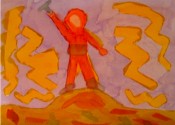
By Gail McManus
Children in Waldorf (Rudolf Steiner) schools are fortunate recipients of a rich curriculum which enlivens and strengthens their emerging capacities for thinking, feeling and willing. Painting throughout the elementary school years enhances the healthy manifestation of these faculties as well as the child’s social relationships. In this article I would like to share some information about the direction a painting lesson may take. What I have to say derives from my own teaching experience and from having studied painting with Gerard Wagner and Elizabeth Wagner-Koch at the Goetheanum Painting School in Dornach, Switzerland. A recommended reading list is added at the end of this article.
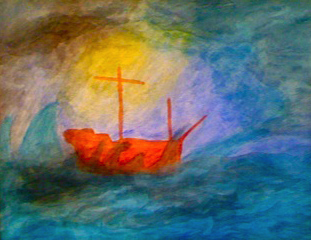
8th grade
To describe a way of creating with color is not easy without showing actual examples, since the painting process is a visual experience. One needs to experiment for oneself, repeating exercises many times over, striving for a new kind of feeling-perception. Then, for the teacher, the challenge is to imaginatively present color exercises to the children in a manner suitable for each age. Only a bare indication of how this may be accomplished can be given here. The goal is to balance colors corresponding to a feeling of inner well-being. To achieve such a balance one must develop a specific awareness, as one does in other art forms. In form drawing, for instance, the children take care to guide the crayon so that they may achieve harmony of space and symmetry. Playing a stringed instrument, they learn how to hold their bow and to listen for the correct pitch. Similar care and dedication to principles of beauty and lawfulness are necessary when painting with watercolors.
The child explores color through his feeling life. How far does the lively, joyous yellow wish to radiate into the surrounding white? How happily and safely protected it feels when surrounded by blue, if their meeting leads to a delicate merging of each, producing a third color, green, which is not dense or heavy, but more like a gentle bridge between its two “friends”. Or, in a different exercise, one might begin with green (pre-mixed) as the first step taken by the colors in “building a house”. The green lays itself down evenly across the bottom to be the floor of the house, measured in an amount suitable to the page as a whole. The bright, active red comes to its rightful place, sitting in the middle on the green floor while also arching above to form the walls and roof! Now yellow and blue contribute their part. And what do they offer their two friends and each other in this story? The teacher’s task will be to embody the conversations of the colors with each other in a language felt and understood by the children.
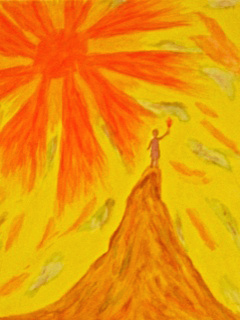
5th grade - Prometheus
The Waldorf curriculum contains a wide range of themes which can be transposed so as to re-emerge as color motifs. In preparing the painting lesson, the teacher may ask what “color mood” the motif suggests. As Rudolf Steiner indicated, we can instruct the children to tone their whole paper with a pale wash of a color on which the other colors are to be painted. For instance, a light warm yellow might set the mood for a lion to arise. On the other hand, first toning the paper a pale blue might be just the right mood for painting the eagle. Then, the colors of the animal, the ground beneath it and the vegetation are all to be chosen with care as well.
One can establish a mood by means of colored washes when coming to such motifs as sunrise and sunset, the life of plants through the various seasons, as well as in connection with stories. A particular color mood may come to mind when contemplating, for example, the Old Testament story of Moses and the burning bush and quite another for let us say, an Eskimo tale…
Essential to this approach is the question of balancing of one color against another. Rudolf Steiner initiated a new qualitative color balancing principle. To qualitatively ‘measure’ colors to each other in this way strengthens capacities of observation and empathy. Whereas green can have a certain weight as “image” color, yellow ( a “luster” color) is by its very nature completely weightless. Thus we would feel a contradiction in beginning a picture by painting green across the top of the empty white page. The bottom of the page will seem its natural and right place. As the painting develops, we sense a clear need to establish balance in terms of above, below, right and left.
Among Waldorf educators there are discussions about different painting “techniques”. Should the children paint on wet paper or dry? What colors ought children to use? In my experience the technique serves what one is attempting to achieve. I have painted with children on wet as well as dry, stretched paper. I have found painting on dry paper conducive to allowing the child to direct out of her feeling life the harmonious interplay of the colors, the amount needed and placement of each color and the way the colors meet one another. Rudolf Steiner indicates that children should “stretch” their paper as soon as they can manage to do so. In my experience, even first graders can do this. Younger children, and some in the older grades, tend to paint quite quickly (though they need encouragement to take proper time for this), and the paper soon becomes quite damp in the process. As they grow more accustomed to “color conversations” as described above, they begin to want to enhance the subtleties of tone and achieve “color breathing”.
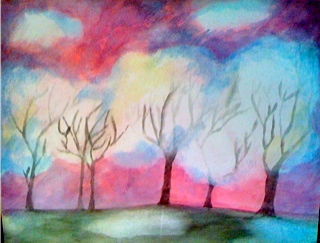
8th grade Winter Trees
There is a method of painting on dry, stretched paper which is termed “veil painting”. One layers or “glazes” colors one over the other, often in large, sweeping “veils” or surfaces. In the method of painting with children as described above, stretched paper is also used. However, the essential key is that the quantity, strength and placement of colors depend on the answer one color gives another as they strive for harmonious balance. We must therefore “listen” to the colors. A social relation between the colors is striven for, just as the children are encouraged to take account of each other’s
needs and feelings.
Another aspect of painting with children deserving attention is the selection of colors the teacher makes available to the children. Naturally, the pure colors, in that they give clear expression to the essential will nature of each color, are to be painted first. When these colors meet and interpenetrate, the mixed colors are born. It then becomes appropriate to paint with colors such as green, orange, violet, and even brown, in their various shades and gradations. These colors all appear in the natural world. There is lawfulness, for example, in the fact that green (as well as brown) is a firm enough color on which to stand. It belongs under our feet and feels “right” painted at the bottom of the page when starting a painting exercise with this color. As the picture develops, and colors merge with each other, green may nonetheless arise elsewhere, as a more “atmospheric” color. I advise the arbitrary placement of colors be avoided. It is questionable whether it is justified to use light, airy colors such as yellow and blue where firmness is called for in the picture. Another example of the use of a pre-mixed color might be toning a paper with a light wash of violet to establish a night time mood at the outset. Or if pumpkins arise as the motif, orange is certainly called for!
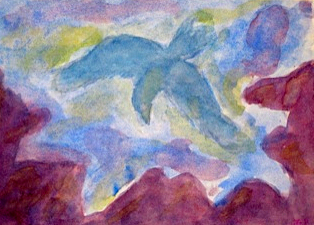
4th grade - The Eagle
When guiding children’s experience of true balance and harmony of colors, it is important that they are able to stand vis-a-vis their painting (rather than sit) and view it frontally. For this purpose, painting boards can be propped on simple, small table easels, as soon as the children are able to manage their materials. Good quality soft, natural hair brushes, quality absorbent paper and fine watercolors go a long way in making for a satisfying painting experience.
As in all aspects of Anthroposophy, it is important to investigate things for oneself. I heartily encourage teachers to explore and find out for themselves just what Rudolf Steiner intended with his new approach to painting. This is an exciting and awe-inspiring adventure.
About the author: Gail McManus studied painting at the Goetheanum Painting School, Dornach, Switzerland, under the guidance of Gerard Wagner and Elizabeth Wagner-Koch (former painting teacher for the Pedagogical Seminar, Dornach). She was a class teacher at the Rudolf Steiner School in New York City, and later at the Hawthorne Valley School in Ghent, NY and the Westside Waldorf School in California. Gail has taught painting classes and workshops for adults, as well as many painting conferences for teachers, in the US, Australia and Great Britain. Each summer Gail McManus offers an intensive course for teachers at the Arteum School of Painting in Ghent, NY. For information, please contact Gail McManus at 518 653-2957 or gailkmcmanus@gmail.com.
Painting workshops and classes based on the sketch-motifs of Rudolf Steiner are also offered by Hans Schumm at the Arteum School of Painting, 1030 Route 21C, Ghent, NY 12075. For information, please call 518 672-5746 or email gerardwagnerfdn@yahoo.com.
Recommended reading:
1. The Individuality of Color by Elizabeth Wagner-Koch and Gerard Wagner. Rudolf Steiner Press, Great Britain, 2009.
2. Color, three lectures given by Rudolf Steiner in Dornach, May 6-8, 1921, together with nine supplementary lectures given on various occasions. Rudolf Steiner Press, Great Britain, 1992. (GA 291)
3. For references regarding Rudolf Steiner’s indications for painting on stretched paper, as well as other indications on painting with children, see Teachers’ Conferences of 3rd and 12th July,
4. Conversations about Painting with Rudolf Steiner (with over 70 color plates). Translated and edited by Peter Stebbing, Steinerbooks, 2008.
5. Eos Art Journal. published in two issues (2007 and 2008). Contains important and fundamental articles on artistic pedagogy. Available from Arteum School of Painting, 1030 Route 21, Ghent, NY 12075.
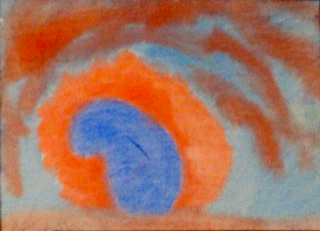
1st grade - Color Story
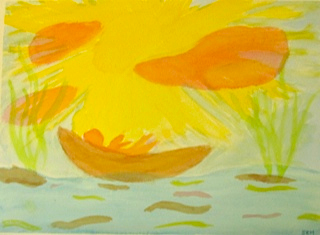
3rd grade - Moses in the Bulrushes
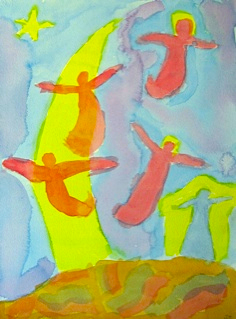
3rd grade - Jacob's Ladder
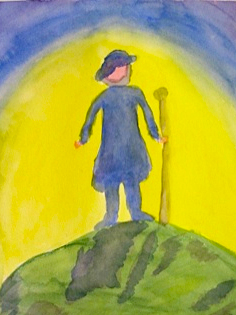
4th grade Odin - Norse Myths
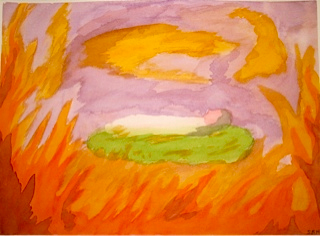
4th grade - Sieglinde (Nibelungen Saga))
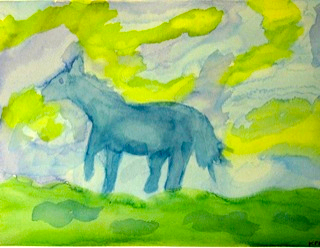
4th grade - The Horse
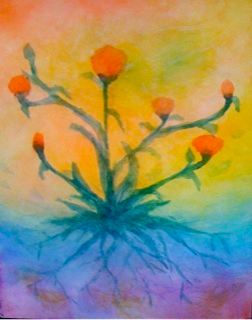
6th grade - Botany
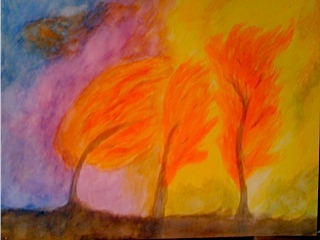
7th grade - Autumn Trees
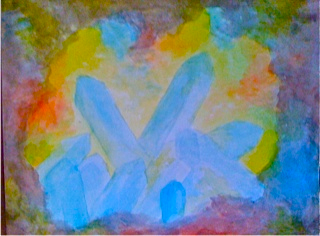
8th grade - Crystals
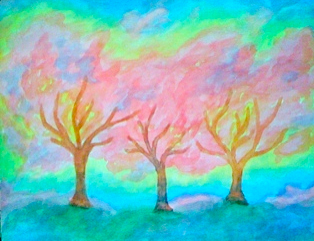
8th grade - Spring Trees
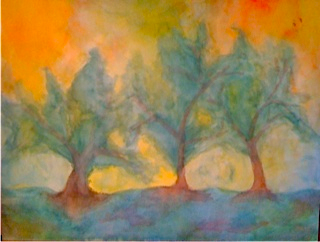
8th grade - Summer Trees
 Storytelling Skills for Teachers
Storytelling Skills for Teachers Dancing for All Ages
Dancing for All Ages Summer Programs - Culminating Class Trips
Summer Programs - Culminating Class Trips The Journey is Everything
The Journey is Everything Train to Teach in Seattle
Train to Teach in Seattle Caring for All Stages of Life
Caring for All Stages of Life Transforming Voices Worldwide
Transforming Voices Worldwide Waldorf EC Training & Intensives in Canada
Waldorf EC Training & Intensives in Canada Quality Education in the Heartland
Quality Education in the Heartland Roadmap to Literacy Books & Courses
Roadmap to Literacy Books & Courses Association for a Healing Education
Association for a Healing Education Middle School Science With Roberto Trostli
Middle School Science With Roberto Trostli Grade Level Training in Southern California
Grade Level Training in Southern California Waldorf-inspired Homeschool Curriculum
Waldorf-inspired Homeschool Curriculum Discovering the Wisdom of Childhood
Discovering the Wisdom of Childhood Flexible preparation for your new grade
Flexible preparation for your new grade Bringing Love to Learning for a Lifetime
Bringing Love to Learning for a Lifetime Space speaks. Its language is movement.
Space speaks. Its language is movement. Jamie York Books, Resources, Workshops
Jamie York Books, Resources, Workshops Everything a Teacher Needs
Everything a Teacher Needs Immersive Academics and Arts
Immersive Academics and Arts Full-Time Teacher Education
Full-Time Teacher Education The Art of Administration and Leadership
The Art of Administration and Leadership Apply Today: New Cohort Starts Nov. 2025
Apply Today: New Cohort Starts Nov. 2025 ~ Ensoul Your World With Color ~
~ Ensoul Your World With Color ~ Art of Teaching Summer Courses 2025
Art of Teaching Summer Courses 2025 Bay Area Teacher Training
Bay Area Teacher Training RSS Feeds
RSS Feeds